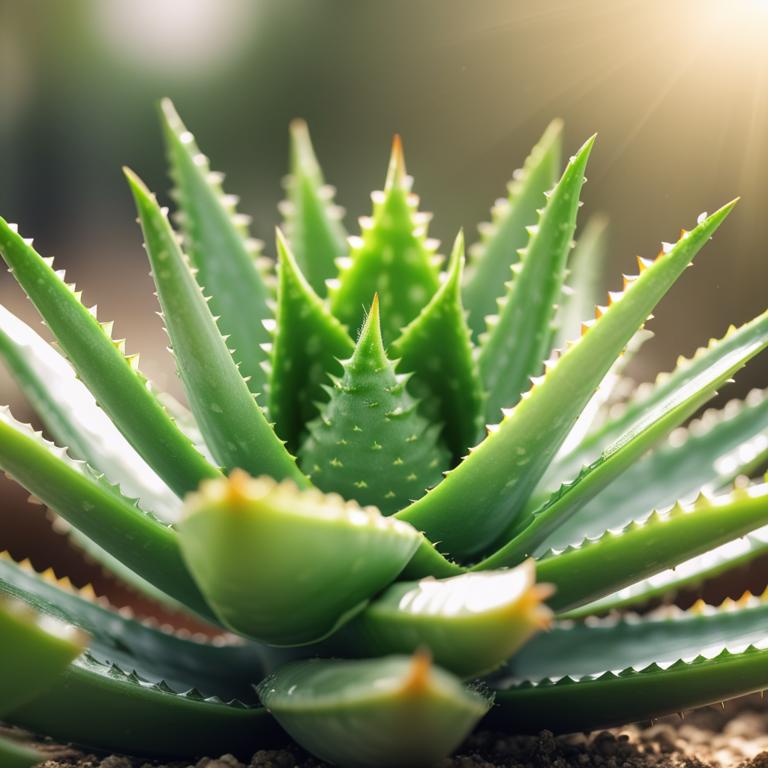9 Aloe Vera Best Active Constituents

1. Saponins
Aloe vera saponins are a type of triterpenoid saponin that have been found to have medicinal properties, including anti-inflammatory and antimicrobial effects. These compounds have been traditionally used to treat various skin conditions, such as acne and eczema, due to their ability to soothe and calm irritated skin. Research has also suggested that aloe vera saponins may have potential anti-cancer and immunomodulatory effects, warranting further investigation into their therapeutic potential.
2. Flavonoids
Aloe vera flavonoids are a group of bioactive compounds found in the plant's leaves and gel, known for their antioxidant and anti-inflammatory properties. These flavonoids have been shown to have potential health benefits, including reducing oxidative stress and inflammation in the body. Studies suggest that aloe vera flavonoids may also have protective effects on the cardiovascular system and may have anti-cancer properties.
3. Phenolic Acids
Aloe vera phenolic acids have been identified as a significant component of the plant's medicinal properties, exhibiting potent antioxidant and anti-inflammatory effects. Studies have shown that phenolic acids in aloe vera can help protect against cell damage, reduce inflammation, and improve wound healing. The presence of phenolic acids in aloe vera contributes to its potential therapeutic applications in treating various skin conditions and diseases.
4. Tannins
Aloe vera tannins are a group of polyphenolic compounds found in the plant, which have been reported to exhibit antimicrobial, anti-inflammatory, and antioxidant properties. These compounds have been shown to contribute to the plant's wound-healing and antiseptic activities. Further research is needed to fully understand the effects and potential applications of tannins in aloe vera.
5. Coumarins
Aloe vera coumarins are a group of compounds found in the plant, which have been studied for their potential medicinal properties and pharmacological activities. These compounds have been found to exhibit antioxidant, anti-inflammatory, and antimicrobial effects, which may contribute to their therapeutic benefits. Further research is needed to fully understand the potential health benefits and mechanisms of action of coumarins isolated from aloe vera.
6. Isoflavones
N/A
7. Phenylethanoids
Aloe vera phenylethanoids are a group of bioactive compounds found in the gel of the aloe vera plant, exhibiting antioxidant, anti-inflammatory, and antimicrobial properties. Research has shown that phenylethanoids in aloe vera may contribute to its therapeutic effects, such as wound healing and skin protection. Further studies are necessary to fully understand the mechanisms and potential applications of phenylethanoids in aloe vera for human health.
8. Terpenoids
Aloe vera terpenoids are a group of bioactive compounds found in the gel of the aloe plant, contributing to its medicinal properties and health benefits. Research has shown that aloe vera terpenoids possess anti-inflammatory, antimicrobial, and antioxidant properties, making them useful in the treatment of various skin conditions and wounds. Studies have also suggested that aloe vera terpenoids may have potential applications in the prevention and treatment of certain diseases, including cancer and cardiovascular disease.
9. Alkaloids
Aloe vera alkaloids have been identified as potential therapeutic agents, with some studies suggesting their role in anti-inflammatory and antioxidant activities. However, research on aloe vera alkaloids is still in its early stages, and more studies are needed to fully understand their medicinal properties and potential applications. Some alkaloids found in aloe vera, such as aloin and aloe-emodin, have been shown to have antimicrobial and anticancer properties.